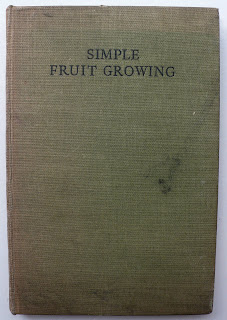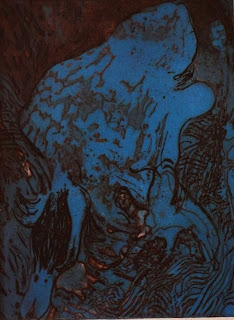
72. "Bella in Heaven"
silk embroidery by Janet Haigh.
I was brought up in a household that always included one or two dogs, but I married a man who quite definitely did not want to share his home with one, so that was the end of that. But when my father died, at the start of the new millennium, shortly followed by his faithful old spaniel, I was bereft. The only solution was to buy a dog of my own. Bella came from a breeder further down the dale, and for me, at least, it was love at first sight.
Love poem.
I have a new love.
Her greeting melts my heart.
Doe eyes, kohl-rimmed and gentle
her presence in our house experimental.
"Besotted," says my husband,
and he's right.
He'll not be charmed without a subtle fight
of wagging tail and wriggling with delight.
"That bloody dog," he says
of mud across the floor
and hairs on clothes
and half chewed bones.
But I am charmed,
and every little chore is worth it
for my own first dog,
fox terrier,
whom I just adore.
Bella met an untimely death, chasing a cockerel across the road. I was heartbroken. My friend Janet, the owner of two wire-haired fox terriers, dyed a large square of silk into beautiful colours. She embroidered Bella, complete with a pair of wings, in the centre of this silk heaven. Her inspiration came from the Bedlington terrier paintings of Craigie Aitchison.
I felt that Bella looked lost in so much space (how rude of me) and Janet, wonderful friend that she is, let me mutilate the silk by cutting it down to make a dainty icon of her work.
This embroidery is precious to me for many reasons.
Bella in Heaven
When Bella died I cried
while Janet stitched my little dog with wings
and dyed a piece of silk bright green
for heaven.
There she stood, with matchstick legs and neat brown head
waiting to play in her silk heaven, generously large,
a gift of sympathy and love.
But in this space she looked too much alone
and so I asked, "Please can I cut her heaven down?"
Now my small dog stands square in her own patch,
the boundaries marked out in wood and gold,
happy in heaven, never growing old.























































